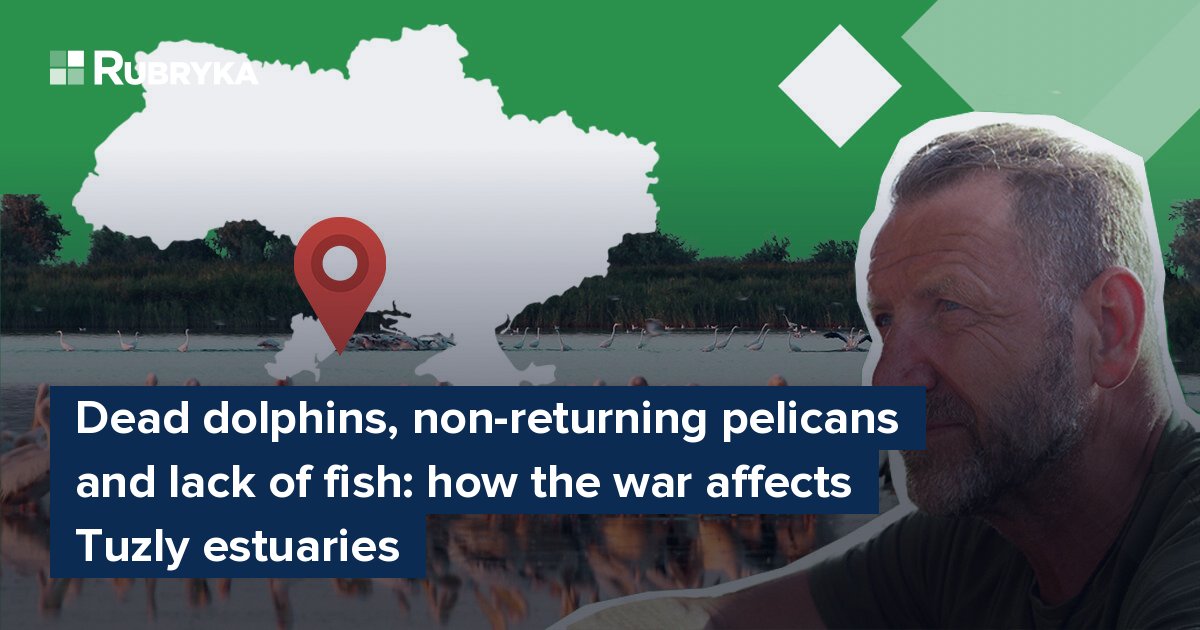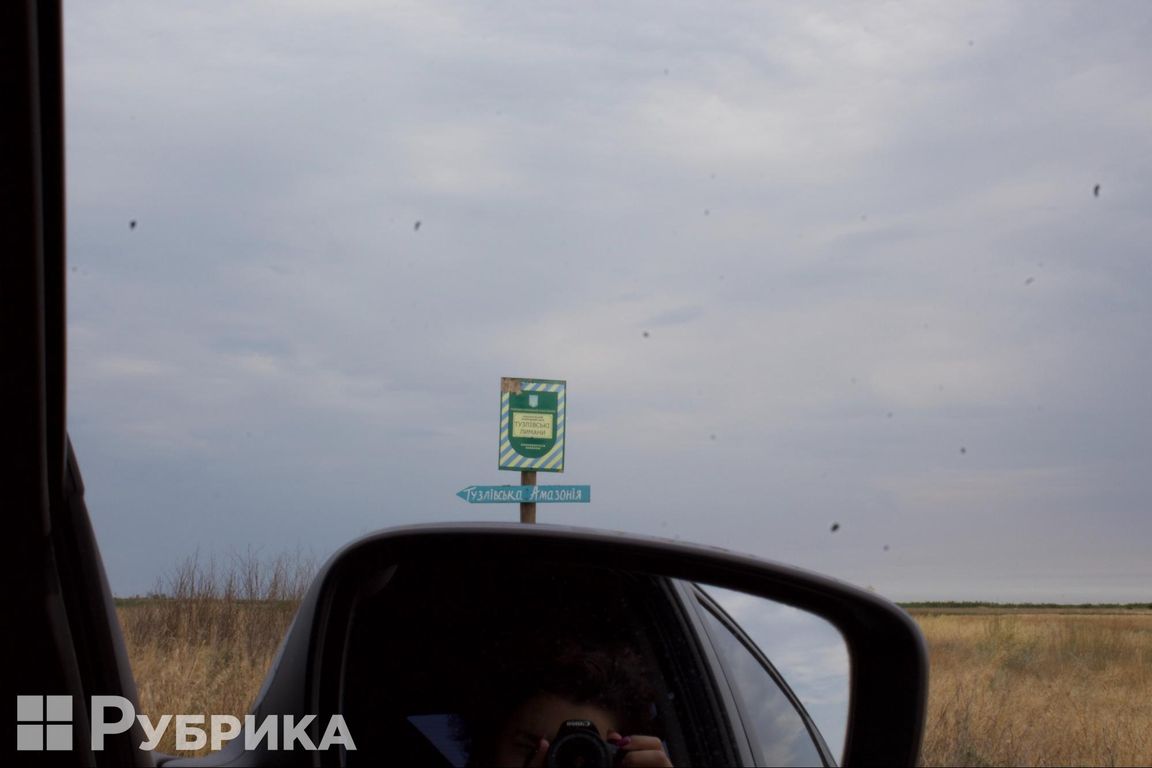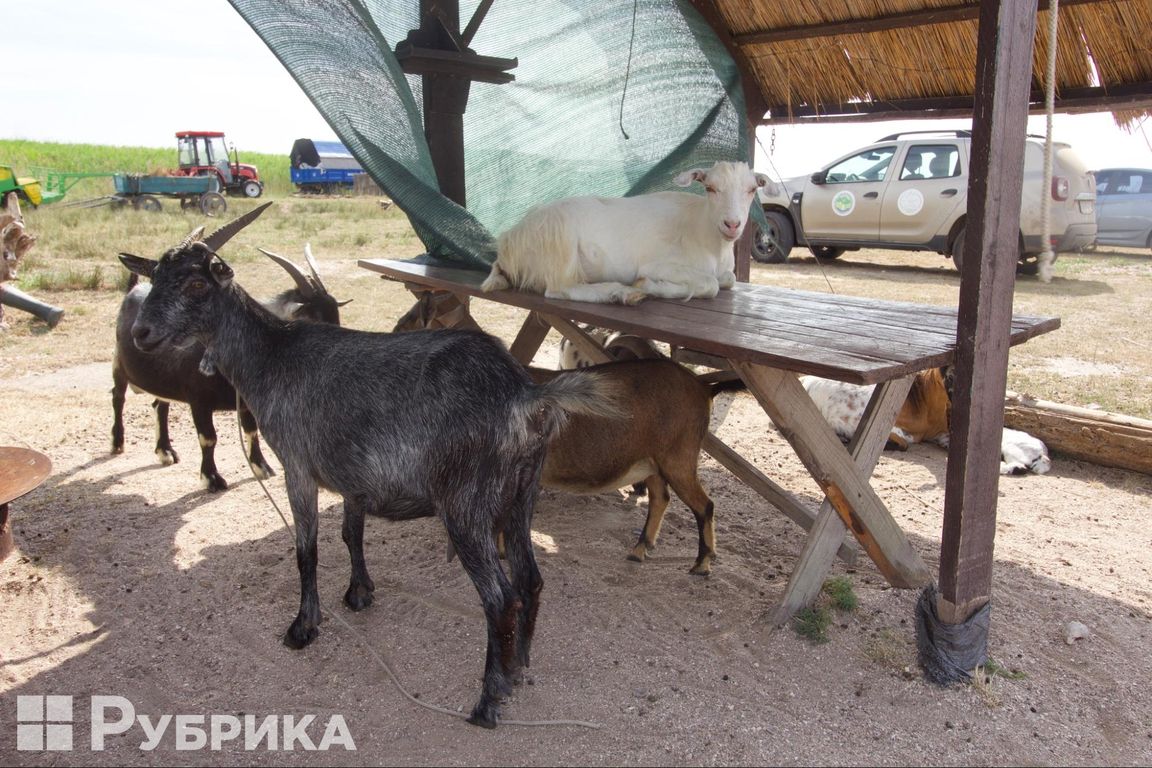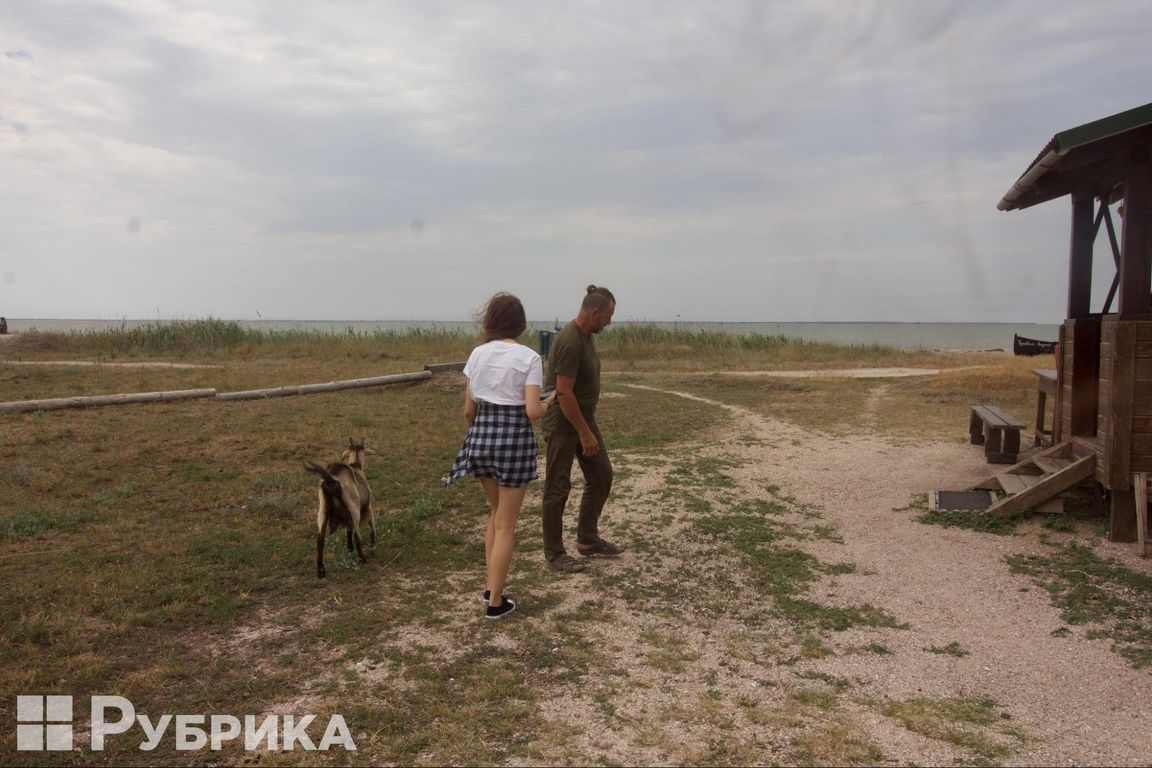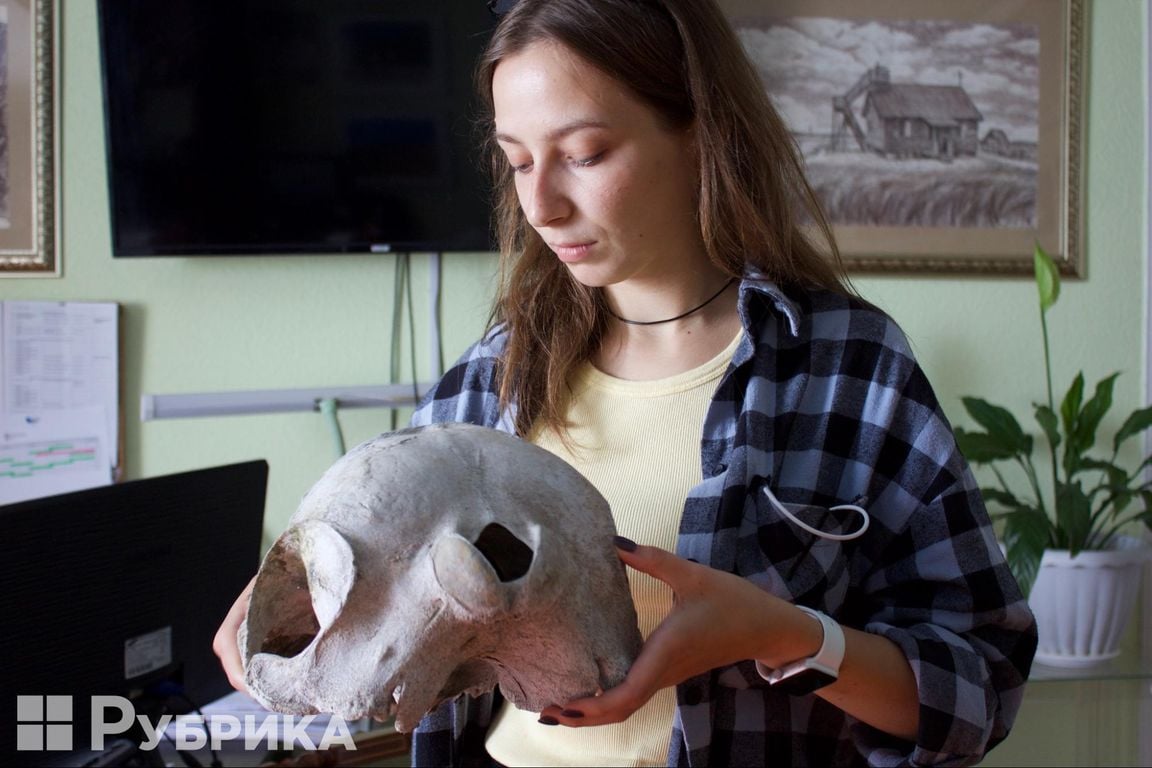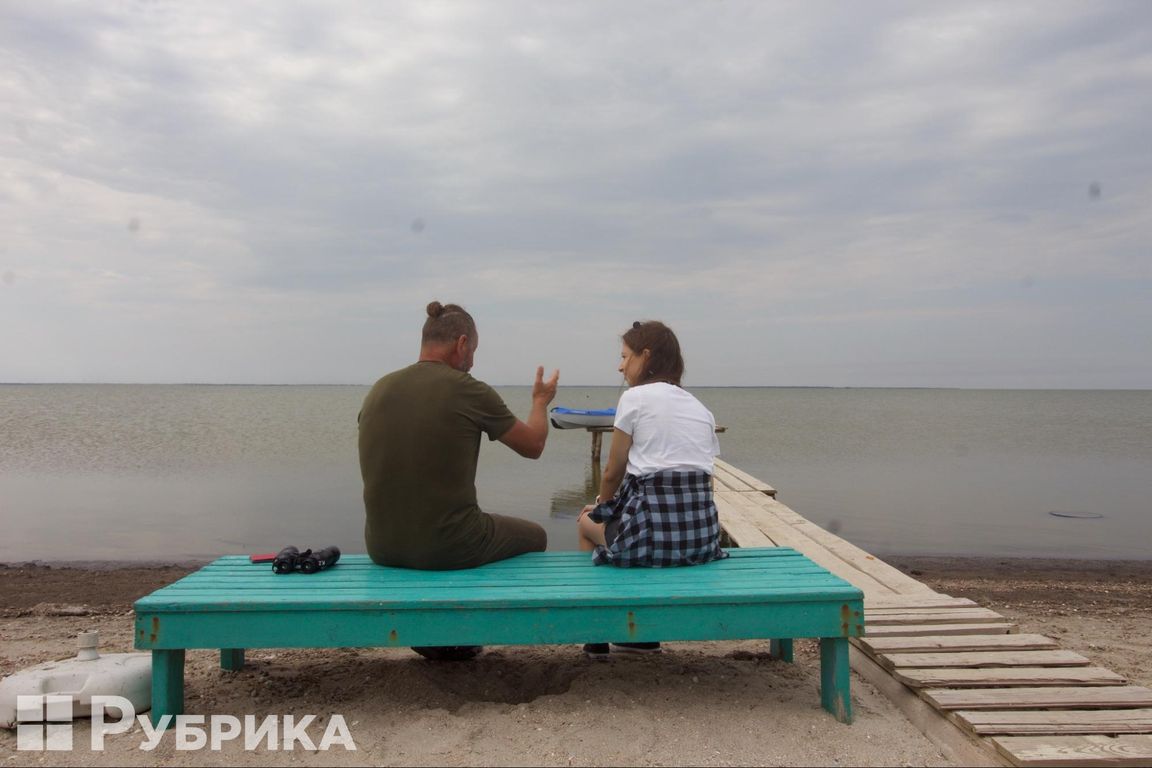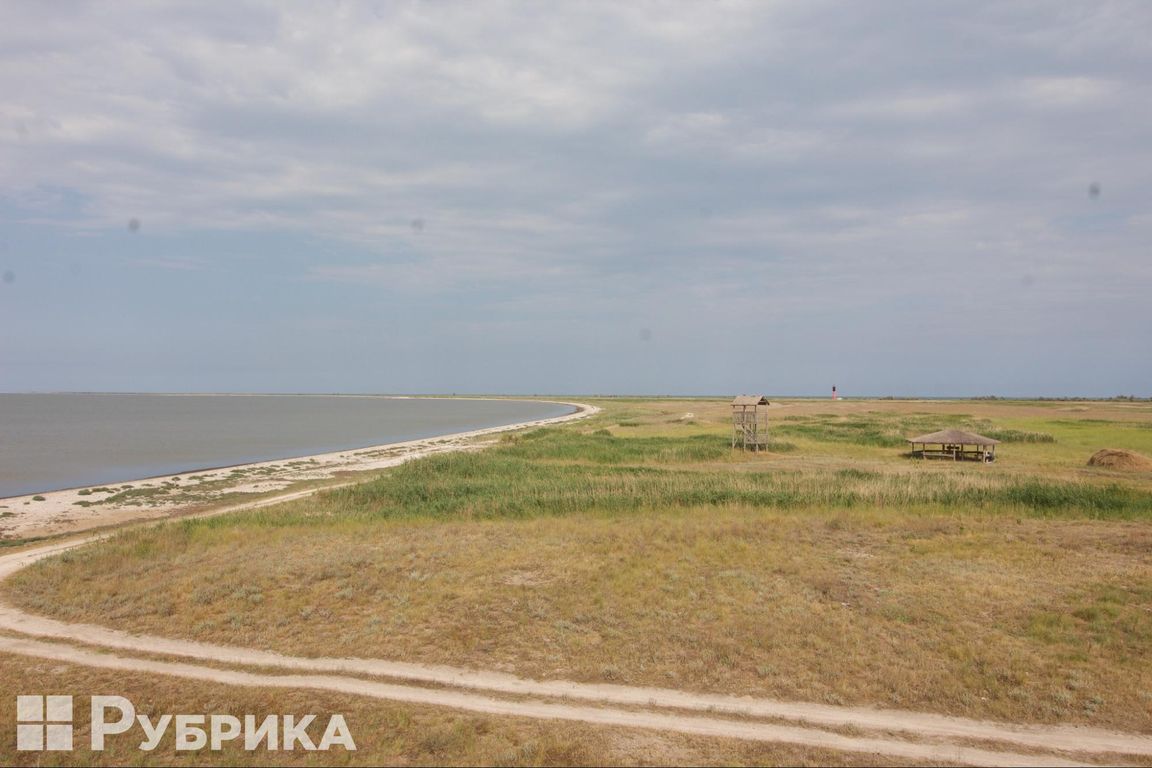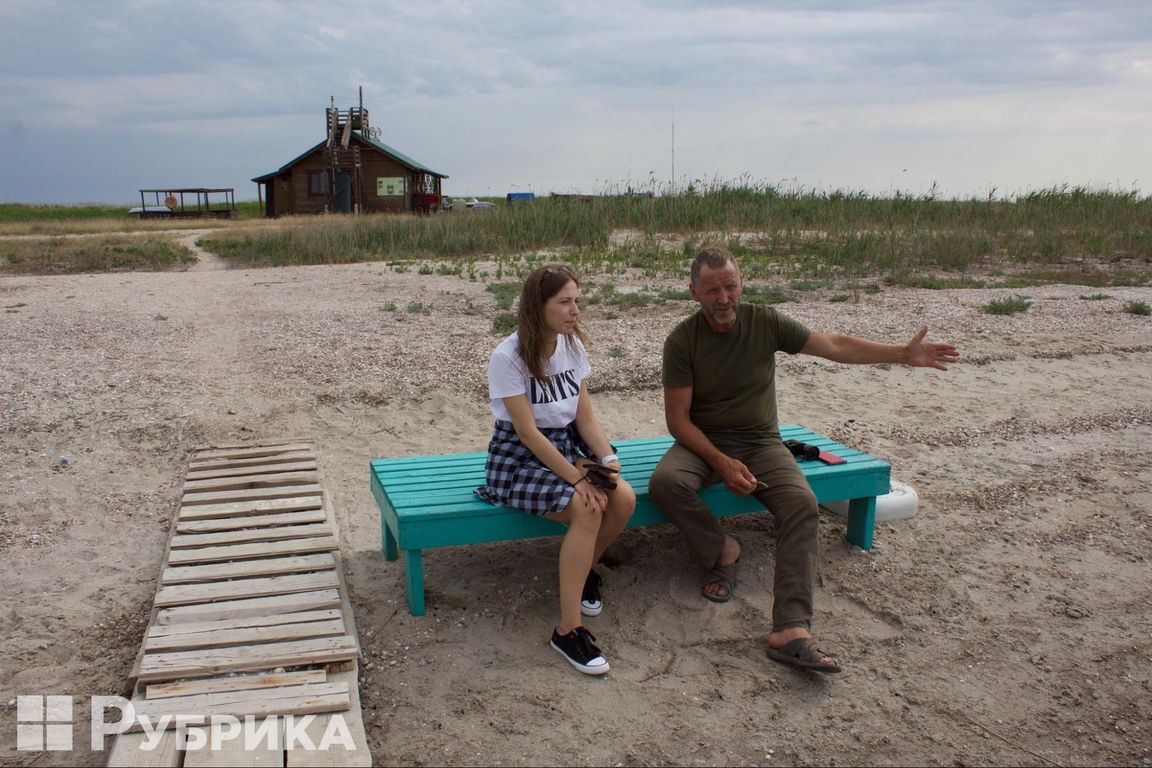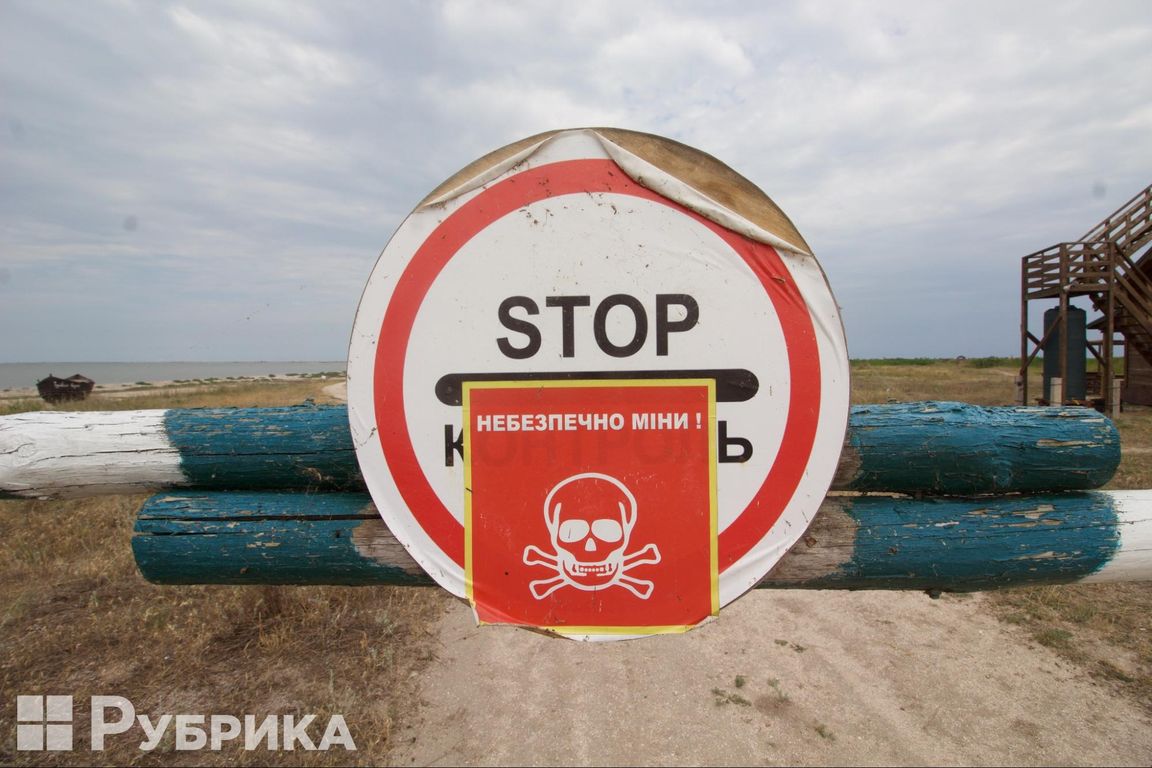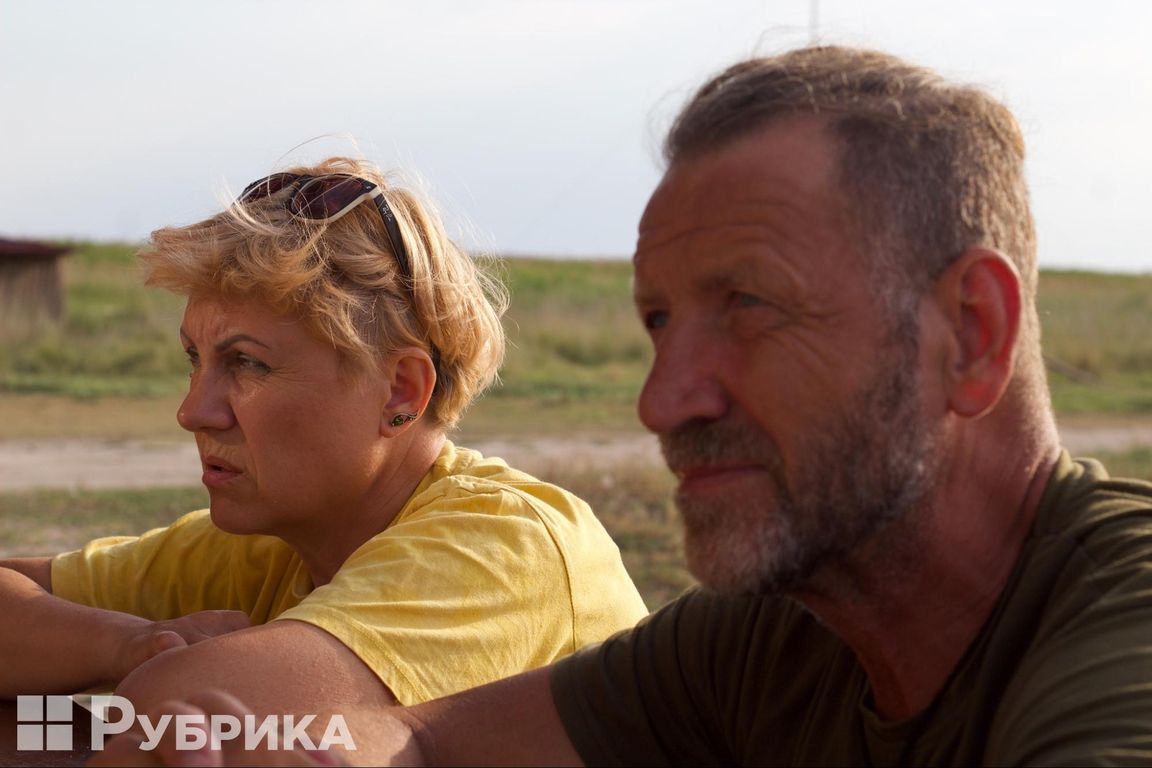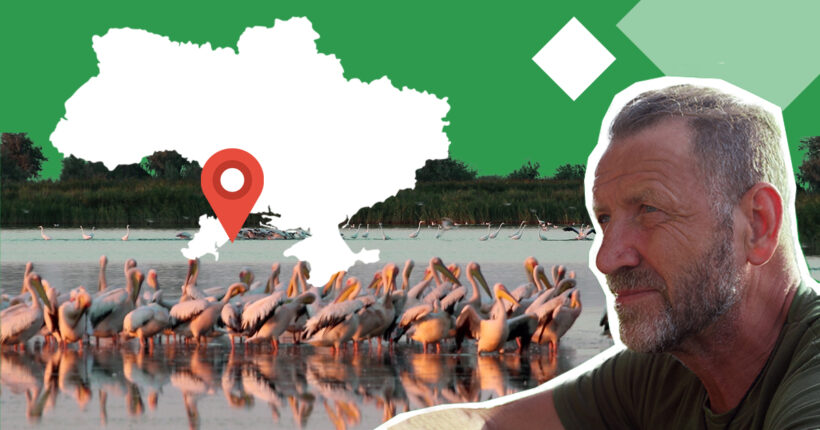
Closer to the south of Ukraine, the landscapes are more and more reminiscent of the African savannah: yellow, sun-bleached fields and squat trees. We are driving along an empty highway. Wild birds fly in front of the car, and the closer we are to the destination, the more birds we see.
Birds don't have wars and don't know that russia attacked Ukraine. However, they, too, suffer from the hostilities. We will devote our article to how the war affects the wildlife in the Tuzly Lagoons or Limans [an enlarged estuary formed as a lagoon at the wide mouth of one or several rivers, ed.], the largest national park in Europe, located in the south of our country, in the Odesa region.
Its area is almost 28 thousand hectares, and now it's the only park on the Black Sea and Azov coasts that isn't occupied by the russians. Approaching the house, constructed in 2018 for the park employees who continuously stay there, from afar, we notice a man on the tower. It is Ivan Rusiev, chief scientist and our article's protagonist. He watches us through binoculars and gets down from the building while we park.
Besides him, we're met by an entire company of several donkeys and a small flock of goats:
"We have a cat here and three donkeys. Have you seen our donkey? One donkey is standing there; one little donkey is the second, and the third is a big donkey," Ivan points out. "When the water level was high, a boat went around here. There are snakes, but we don't have poisonous ones in the national park. A boat here is a photo zone—tourists take pictures. You see, the lighthouse is black and red, called Shahany. It is very patriotic in black and red colors. The only lighthouse closest to Snake Island [Zmiinyi Island, ed.]."
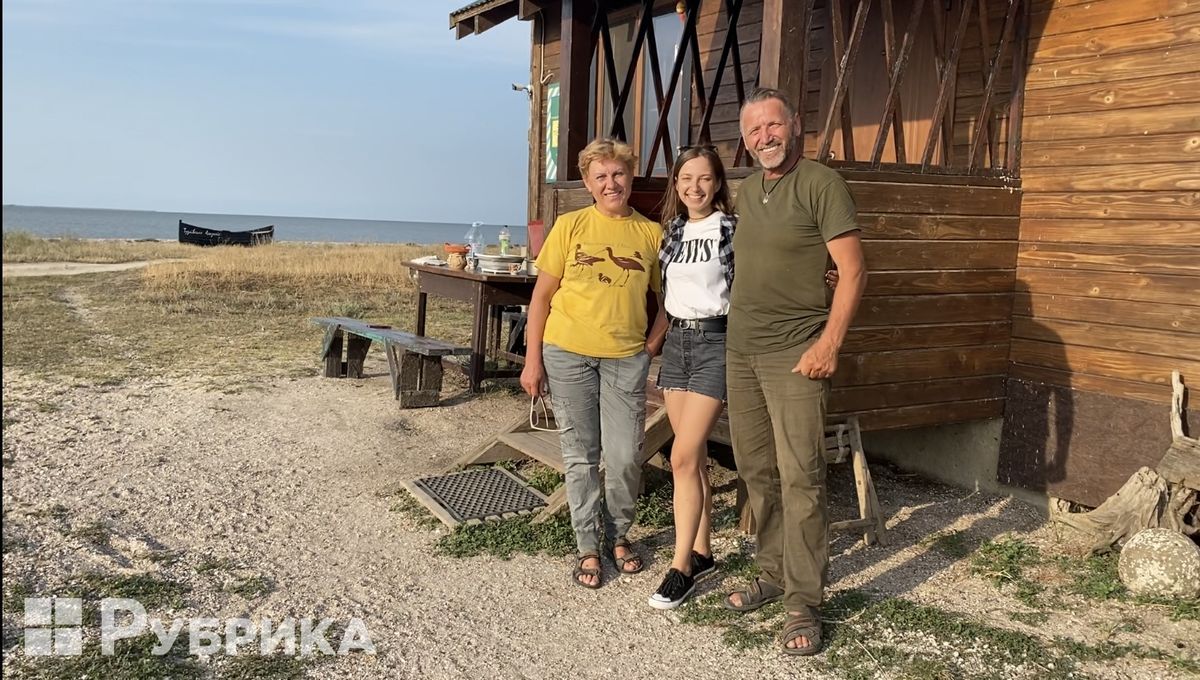
Photo: Iryna Vykhristiuk, executive director of the Tuzly Lagoons National Nature Park, Rubryka journalist Viktoria Hubareva, and Ivan Rusiev, a leading scientist and acting park director
Soon another person comes up—the director of the park, Iryna Vykhristiuk. We're greeted so warmly as if we have known each other for many years, but it is our first personal meeting; before, we spoke with Ivan only via video.
We go around bumps in the road covered with large shells. Ivan Rusiev explains:
"These are rapanas—shells brought here in the 1950–1960s. Then mollusks lived in them. We are now using them to level the road, which was our first eco-solution: a small example of the environmentally friendly use of its resources." Later we will see that the entire sandy coast of the estuaries is strewn with shells.
What is the problem?
Dead dolphins
Choosing from a long list of environmental issues, we stop at the hottest and saddest one:
"Only recently, there has been news about dolphins, which once again threw themselves ashore and died. Why is this happening?" we ask.
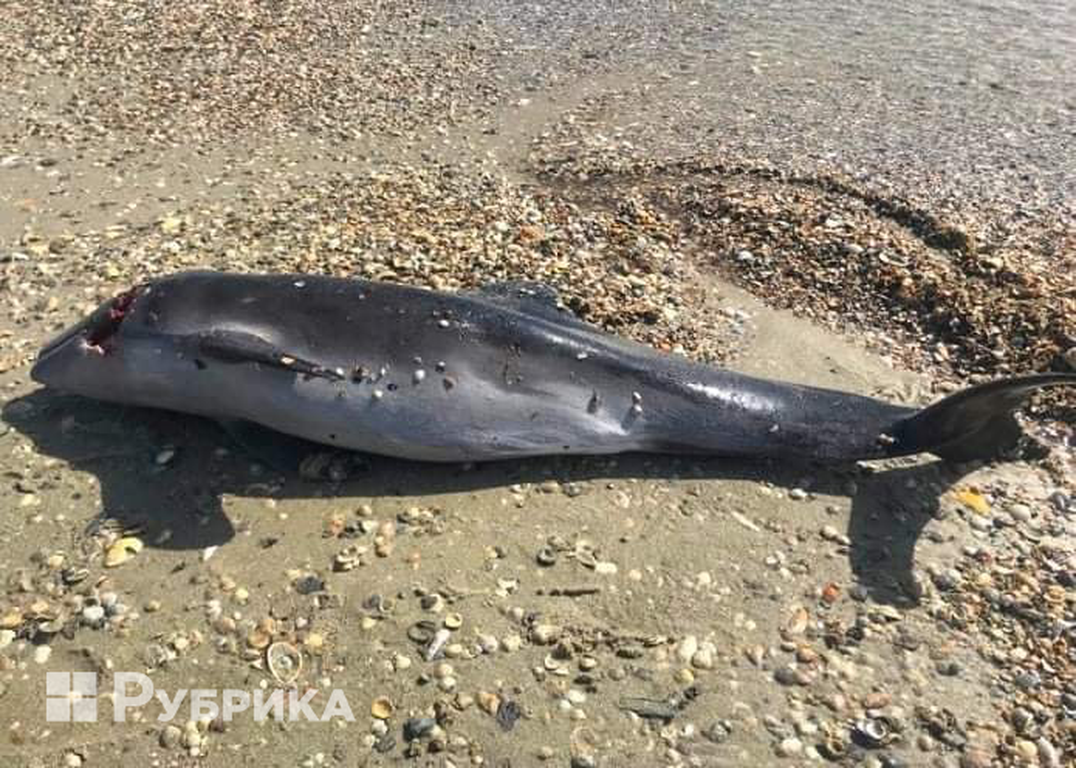
Photo: a dead dolphin on the coast, found by employees of the Tuzly Lagoons Park. Source: national park's Facebook page.
"Yes, the biggest problem is dolphins. It is the most magical inhabitant of the Black Sea; very few exist. There have never been so many deaths as from the war. Their numbers are meager, and they die very quickly. Many of them died, and restoring the numbers is challenging. I'm thinking about how to do it in the future…" Ivan Rusiev says.
"The biggest problem is dolphins. There have never been so many deaths as from the war"
Ivan Rusiev explained that dolphins were dying because low-frequency sonar signals on russian warships hit the dolphins' inner ears, making them unable to navigate the sea:
"The dolphin becomes, as it were, blind; the stricken dolphin cannot orient and begins to dangle in the sea in flocks. They're like blind people. A blind dolphin is a dead dolphin."
Such dolphins cannot find food, their body weakens, and as a result, they die. Some deaths are directly related to explosions:
"We recently found a dead dolphin that had burnt skin. It was evident that it received a burn, even when it was alive…" Iryna Vykhristiuk adds.
Forest fires
Unfortunately, it is not the only misfortune that has happened in the wild due to military operations on the coast. Ivan Rusiev says fires are the first among the "landscape" problems. They're taking place because of the constant shelling of the russians: the last strike was two days before our visit; the rocket hit the resort adjacent to the park. The terrain in the estuaries is sandy, and fire trucks drown in it; the park needs special equipment.
"Now on the Kinburn Spit, the orcs are driving in 'Tigers' [armored personal carriers]—serious ones that drive on the sand. We don't have them here. Fire trucks are all equipped with one bridge; as a rule, they don't pass the sand. Therefore, we put out fires on our own: either we drive there on our 'Niva' [car] with satchels, or we put out fires on the spot with buckets or pots; we try to do this by any means."
Helicopters also cannot extinguish fires; it is too expensive since estuary fires aren't comparable in size to forest fires, where you have to work from the air to put out the fire.
"These fires lead to negative consequences," the scientist continues, "Insects, the vegetation, small animals, and birds that nest there die. It is a big problem."
Threat to red-listed birds
While we're still on the shore, two faint dots appear in the sky.
"These are pelicans flying," Ivan Rusiev immediately determines the birds. "Let's enjoy…"
The war isn't only destroying our homes. Just like people, birds can also lose their homes; it is what scientists are now observing in estuaries.
"In our territory, where explosions happened, there used to be bird colonies. Birds fly from Africa—some in flocks and some even alone. We have nests of pied avocets; they're red-listed and live in colonies. Bombs fell in those places where they settled; their nests are ruined, and there are no more colonies. Those birds that fly through our parks or along the Black Sea coast suffer from explosions: they have to change their route, and changing their course, they lose the chance to feed actively.
"Last year, our pelican population was about 1,500 individuals, and this year it is only 300"
Here is another problem: the birds stop nesting in the lagoons because they don't have enough food. The difficulty is that the park is partially mined, and it is unsafe to travel to some territories because of possible shelling by the russians from the sea. Together, these two factors prevent the park staff from clearing the sandy barriers between the sea and the estuaries. They did this procedure every year so the estuaries could be filled with water from the sea and help marine fish wintering in the sea enter the estuaries. This fish feeds those birds that nest on the territory of the Tuzly estuaries.
"They cannot actively eat and cannot gain normal fat, and their fat is like fuel. Without it, the birds cannot fly where they need to," Ivan Rusiev explains. "Now the main fish—mullets—known since the founding of Odesa doesn't come here. There are five mullet species, and they always winter in the sea. In the autumn, they rarely come, but in the spring, they come. The lack of water exchange between the sea and the estuary didn't allow the mullet to enter the lagoon. There's no mullet in the estuary now. It isn't good for the birds and the locals who fished mullet. For example, last year the population of our pelicans was about one and a half thousand individuals, and this year it's only 300."
Oil and chemicals in the sea
But it is indirect harm. On July 7, a transport ship that could carry aid from the West caught fire in the Black Sea. Such accidents at sea are not uncommon; they're also fraught with consequences that nature feels, and then people notice.
"We know that the Ukrainian forces destroyed several russian ships, and it's obvious that harmful chemicals got into the sea; it would seem one could see them. But the problem is that you can only approach the seashore at a few points," says Ivan Rusiev. "We can't cross many distances because there are places where it's prohibited or mined. We haven't been to such sites. Where we were, we saw nothing, but it doesn't mean that this phenomenon doesn't exist. [MP Yurii] Boiko's oil rigs, which were bombed, still leak a lot of oil products, and the sea suffers from oil pollution."
Oil covers the top layer of water—neuston. There are a lot of living organisms there. For example, mullet fry lays eggs in the sea.
"These little ones, larvae, go up, where they should feed on microbes and bacteria. But if there's an oil slick, they cannot breathe, and millions of these organisms die. There's no oxygen supply to the sea; algae cannot produce oxygen. We have a Phyllophora field in the Black Sea—unique algae used by our agar-agar plant in Odesa. It's protected and in the Red Book, but it can suffer due to oil spills: the refraction of light is not right, and there is not enough energy to produce a population of this algae. When oil is spilled, even if it's a small spill, it is a huge biodiversity loss. You can't see oil here yet, but I think it's there."
The death of dolphins, the destruction of nesting sites for wild birds, and sea pollution cause irreparable damage to nature. So far, it isn't visible; on the shore of the estuary, it seems that peacetime has come back. On the day of our visit, Ukraine raised our flag over Snake Island, but the locals still didn't recover from the shock of the hostilities. Later, when we left Ivan Rusiev and returned to the city of Tatarbunary, the locals told us that they had even learned to recognize the military signals.
"Each time we froze from explosions on Zmiinyi [Island], and each time we waited for a yellow rocket. The yellow rocket means the end of the military operation," Maria, a resident of Tatarbunary, shared.
Ivan himself spent the first months of the war in the house, to which we moved during our conversation. Here they were alone, together with Iryna.
"When the russians tried to take Zmiinyi, we heard and saw explosions on the island, and at night we walked with Iryna along the sandy spit and listened: were russian troops landing? We passed information to our military in the Ukrainian forces," says Ivan Rusiev. "Our front is peaceful, and we do what we can…"
But what else can be done?
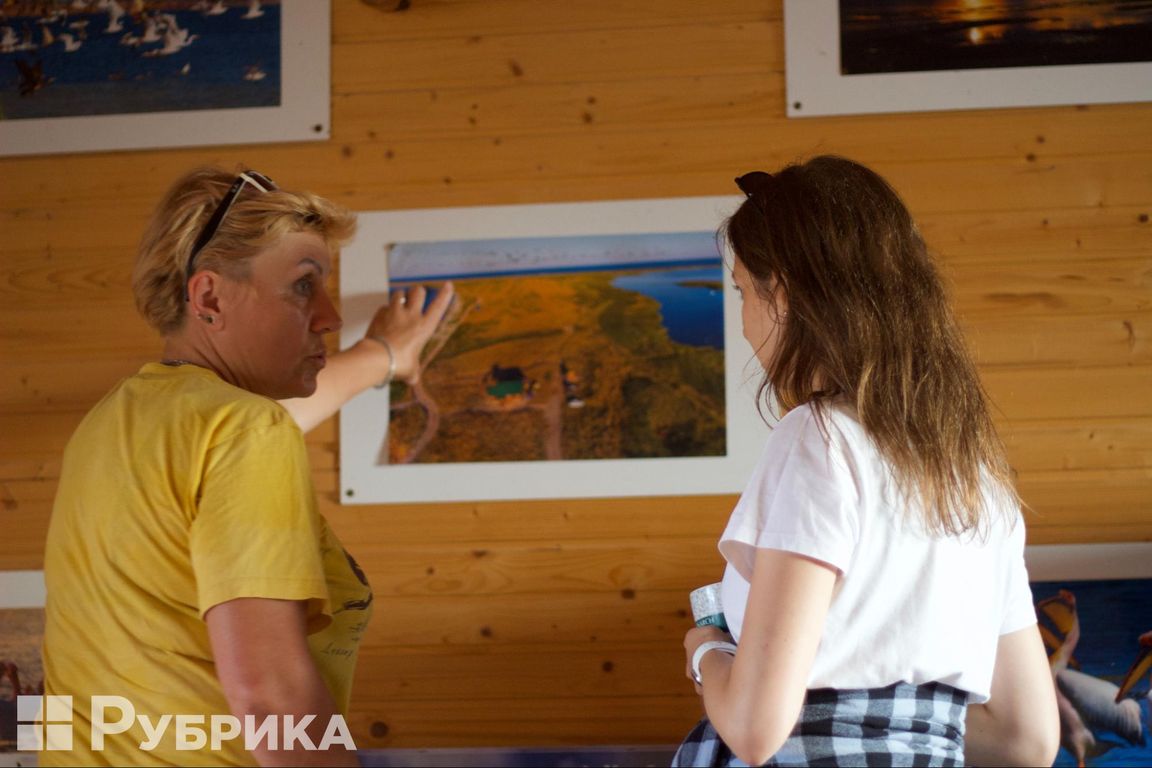
Photo: Iryna Vykhristiuk, director of the Tuzly Lagoons National Nature Park, and Viktoria Hubareva, Rubryka journalist
What is the solution?
Of course, the destructive war must first stop with Ukraine's victory. All the national park's employees are trying to contribute as best they can. In posts on the park's Facebook page, Ivan Rusiev keeps a war diary, and daily he publishes exciting facts about life in the Tuzly Amazonia. In each post, the scientist calls for donations to the Ukrainian army, even though funding for reserves and natural parks is now the last thought for the state. We asked the scientist why he doesn't ask to donate to the park:
"I thought about writing it, but I was able to find some resources for the park for fuel in a non-public way. I think it is enough for now. I don't want to develop activity now because there are no people. Many [park inspectors — ed.] were drafted into the army, and the park needs to be protected. I think that the main thing is military operations and helping the army. We volunteer in different ways with Iryna, our director, go to Romania, and buy thermal imagers and binoculars. Our friends, our partners in Romania and Bulgaria, as well as in Ireland, help us in different ways: sleeping bags, binoculars, thermal imagers," says Ivan Rusiev.
As for restoring the environment, scientist Ivan Rusiev says after a relatively short period, nature will be able to heal the wounds inflicted by the war.
"In those places where there were fires, several years must pass before the vegetation is restored to its previous level. As for the birds, they got scared at the places the russians bombed and where there were craters, where the explosions were strong enough. Of course, they will fly to Africa, where they will move with other birds from other regions and return. If there is no disturbance factor, of course, they will nest. I hope the war will end, and we will be able to restore water exchange, but it requires resources, and we will ask the Ministry [of Ecology] for funds. In the meantime, we're cooperating with local fishers, who provide their resources for water exchange. I believe since nature has its enormous force—if the ecosystem isn't destroyed to the core, for instance, the forest isn't cut down, the steppe isn't plowed up, the estuary isn't dried up—nature will restore itself quickly after 3–5 years."
Now the main task of the National Park staff is to record the damage caused by the russians as accurately as possible. The only question is how to do it.
"The Ministry of Ecology has created an Ekozagroza application to record environmental crimes, right? Are you talking about this method?" we ask.
"We don't use this app," says Iryna Vykhristiuk. "What is meant by environmental threat? Can a non-specialist say what kind of rocket flew in, what substances got into the soil and water when it exploded? This app is just a statement of fact. It's tough to prove the damage later, having only superficial data, since there's no information about what kind of rocket it was, the radius of impact, rocket fuel, shells, etc. Even this information needs to be stored somehow competently. A task force should immediately arrive at the site of the explosion to correctly record it, so it's a document. Then they contact the competent authorities, which will give an expert opinion.
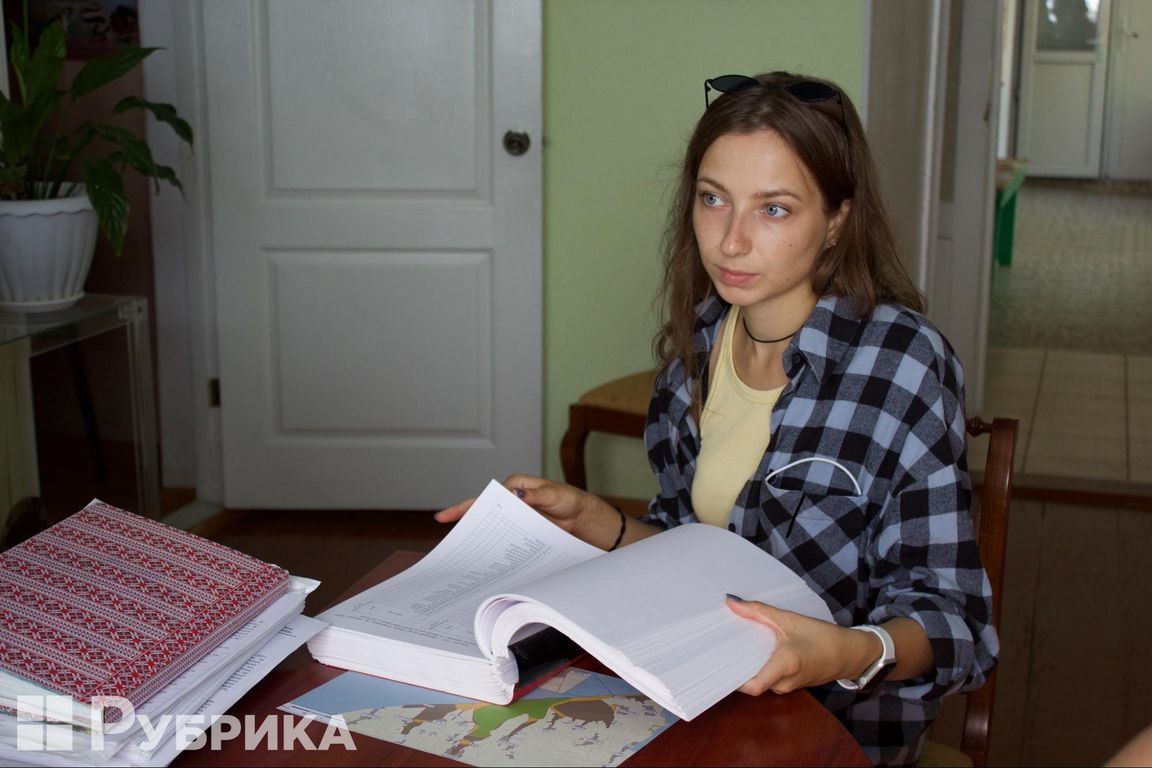
Photo: Rubryka journalist in the park office holding the Chronicle of Nature, the annual report of the Tuzly Lagoons National Nature Park
For now, all figures, statistics, and graphs are recorded in the Chronicle of Nature. It's the park's annual ecological report on the number of animal and plant populations of the Tuzly estuary.
"Our task is to bring the aggressor state to justice," Ivan Rusiev believes. "All three species of dolphins found in the Black Sea are listed in the Red Book. Therefore, the information collected should translate into redress. We hope that if a lawsuit is brought against aggressors for damage to wildlife, our authorities are considering aspects and developing a manual on collecting data for the court to accept them."
Iryna adds that the difficulty lies in proving that military actions caused the damage. Using the example of dolphins, she explains:
"Every dolphin needs an autopsy. Many of those washed ashore died because of infections. Even the russians are now trying to speculate on this. But infections are the result. They were able to develop because the body was weakened. It was weakened because the dolphin couldn't eat—the animal lost navigation from the impact of ship sonars on them. To prove this, you need to take the corpse of each dolphin to a certified laboratory, conduct an autopsy, and receive a certificate. It is very long, complicated, and expensive.
Ivan picks up:
"With dolphins, everything is very complicated, but now there are statistics on the death of dolphins in many countries. We are collecting the data to summarize it in the form of articles.
Today, the Tuzly Lagoons is the only natural reserve on the Black Sea and Azov coasts that the russians haven't occupied. The park's territory is partly mined and partially guarded by the Ukrainian military. There's an agreement between the park and the Ukrainian army in the vicinity: if the soldiers discover a dead dolphin, they transfer the information to the office of the Tuzly Lagoons; scientists there process this data.
The primary and most important task is to stop hostilities. When the war is over, and Ukraine wins, it will be possible to start a lawsuit and demand compensation. However, environmental problems in the Tuzly Lagoons are connected not only to the war.
This article is the first part of a series of four reports about the Tuzly estuaries. Stay tuned for Rubryka's updates so you don't miss the following reports.
Photos: Yevhenia Hapotchenko
Newsletter
Digest of the most interesting news: just about the main thing



